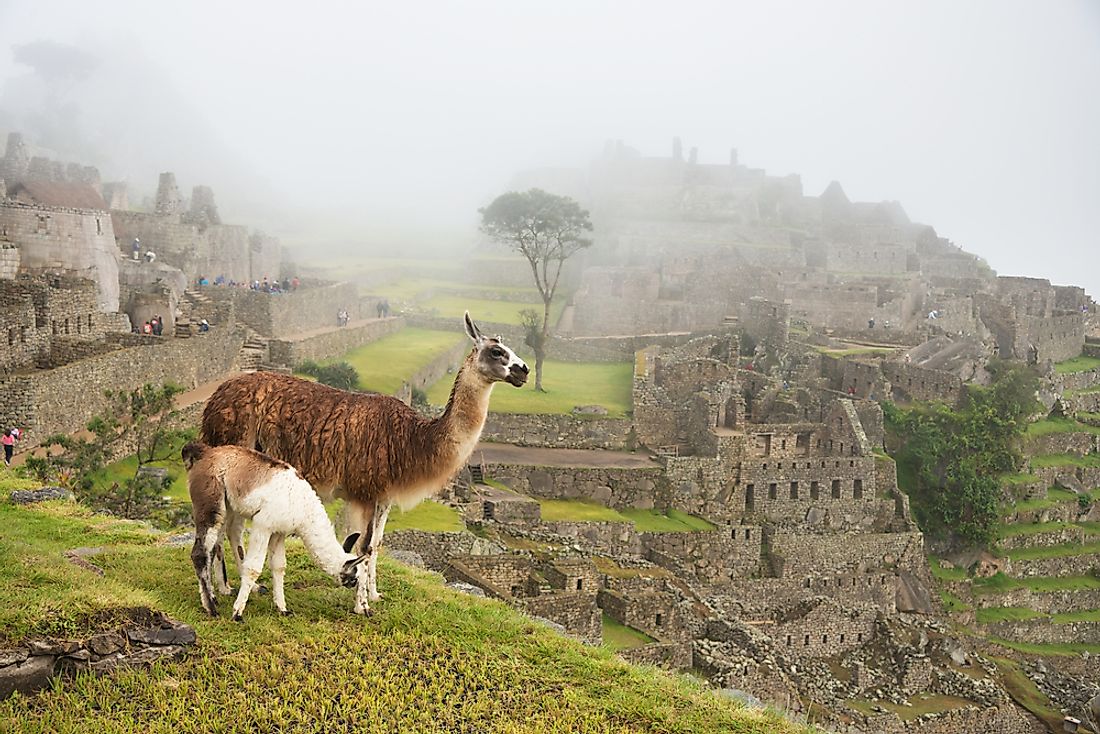Where Do Llamas Live?

Llamas are the domesticated camelids which the Andean cultures used as pack animals and for meat during the Pre-Columbian period. Llamas are the South American cousins of the camel which do not have humps. They are social creatures which prefer living in herds. Llamas originated from the central parts of North America over forty million years ago and migrated to South America during the Great American Interchange.
Llama Size and Appearance
A fully grown llama is about 5.9 ft tall and weighs about 440 lbs while a cria (baby llama) weights approximately 31 pounds. Llamas have longer ears which are curved inwards and narrow feet with their toes being more separated than the camel’s toes. They have short tails and vary in color with a majority of them being brown, black, grey or white. Llamas are neither pseudo-ruminants nor ruminants; they have a unique stomach with numerous compartments which allows them to eat high cellulose and lower quality foods. Llamas have a lifespan of between fifteen to twenty years, but some can survive for over thirty years.
Where Do Llamas Live?
Even though their natural geography stretches across the Andes Mountains, their present scope extends far beyond this region. In South America, they are in Peru, Ecuador, Chile, Bolivia, and Argentina. They can also be found on other continents like Australia, North America, and Europe. They reside in mountainous and temperate regions which are over 7,500 ft above sea level. Llamas can also be found in ranches and farms all over the world. Currently, about 168,000 llamas are in Canada and the United States. The use of llamas as guard animals began in North America during the early 1980s. Americans living in the western parts of the United States used them to guard the other livestock like cattle and sheep from predators.
Natural Habitat of Llamas
These herbivores originated from the rugged mountainous regions of western South America, particularly in mountains and plateaus which are over 10,000 ft above the sea level. They prefer open grassy landscapes. Since their habitats have very low oxygen concentration, these animals have high levels of red blood cells which help them survive in this high altitude areas.
History of Llamas
Numerous scholars like Alex Chepstow-Lusty have always argued that the usage of llama dung as manure made it possible for the early man to switch from the hunting and gathering lifestyle to agriculture. The Moche community used to place parts of llamas in the grave of important individuals as an offering. Llamas were the only beasts of burden in the Inca empire, and a majority of the communities associated with the Incas had an extended tradition of herding llamas. The llama was of symbolic importance to the Inca nobility, and they were buried with a symbol of these animals. Currently, people keep them for meat and fiber production and the beast of burden. These sturdy animals have been used as pack animals for centuries. They would carry about 75 pounds for over 20 miles in a day. The pack llamas train (which had numerous animal) used to move heavy goods over the rough terrains of Andes.











